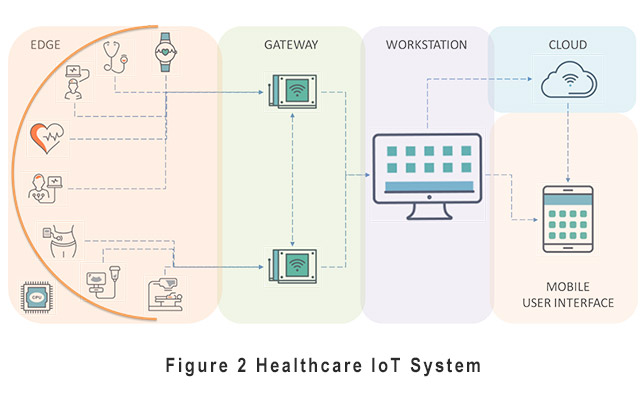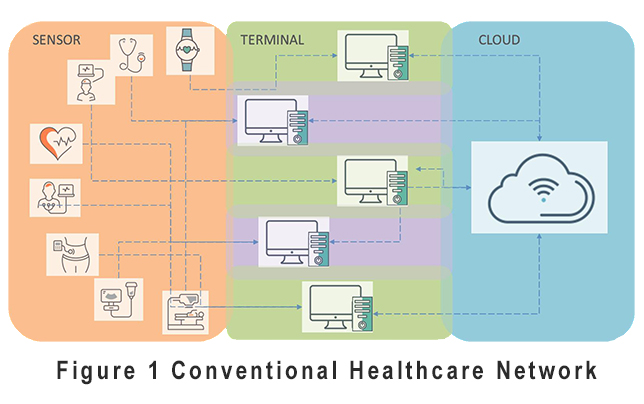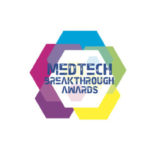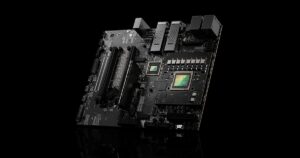As the growth of medical technologies and health informatics, the amount of data and requirement of computing resource has become an issue for healthcare providers. In the past few years, healthcare information technology (HIT) vendors has provided a bunch of solutions to workflow, data management, data analysis and data visualization among electronic health record (EHR). Also, medical device companies have paid lots of efforts on interoperability to allow physiological signals more accessible and analyzable. All these advance in network computing contribute to healthcare Internet of things (IoT) and facilitate the adoption of artificial intelligence (AI) or even artificial intelligence of things (AIoT). Most computing tasks relies on a cloud-edge computing architecture (Figure 1). However, few solutions are provided on edge computing to optimize among dataflow, computing resource and cost.
What are the advantages and disadvantages of conventional architecture?
The conventional architecture occurred naturally in the industrial ecosystem because of absence of interoperability and compatibility of data format and device. It provided direct connection between sensors and terminals with scarce of preprocessing and analysis. As a result, terminals were built with higher computing performance and large data storage to collect and process the raw data from sensors and upload sensor data to cloud server in parallel. It’s easy to install sensor devices and terminals in healthcare facilities because they are well-paired in default setting. However, integration of health information heavily relied on vendor neutral archive (VNA) or cloud server which is capital- and technological-intensive.
What should a healthcare IoT system include?
A healthcare IoT system includes four components (Figure 2): edge device, gateway, workstation and mobile user interface. The components in the system are interconnected through wired or wireless network. An edge device contains at least a sensor to collect data from patient side and a processor to preprocess sensor data and delivers the preprocessed data to a gateway. The gateway is able to obtain or to integrate the received data from one or more edge devices in a secured or interoperable form and then conveys to a workstation. The workstation bears most data storage, analysis and visualization in a comprehensive or real-time perspective. The historical data or the retrospective data which needs huge data storage or computing resource is then transmitted to a cloud server. In addition, a mobile user interface may retrieve graphical information or data visualization from the workstation or the cloud server.

What are the benefits from a healthcare IoT system?
Nowadays, the medical devices and health informatics are more interoperable from physical later to application layer. Data collected from sensors is preprocessed or filtered in a standard format. The system is capable to utilize gateways for data transmission with buffering or basic analytics. Also, most networking occurs among local area network (LAN) which increase cybersecurity and network reliability. The system reduces the burden of the cloud servers and reserves the key function of the cloud servers in high speed computing and data storage. Furthermore, healthcare professionals can retrieve visualized data more easily through the mobile user interface such as a medical tablet within LAN.
How to select components for a healthcare IoT system?
Usually, the architecture design can be aimed on low energy, high throughput, low latency or resource utilization. In low energy set, edge devices may be built with ARM core or Intel Atom processors on small form factor computer boards and the gateways may be built with laptop class processors and wireless LAN (WLAN). In high throughput set, edge devices may be built with faster processors and larger data storage buffer and the gateways may be built with Wi-Fi 802.11ac. For workstation, it can be built as a medical all-in-one (AIO) or a medical box pc with a powerful server level processor, such as Intel Xeon, is favored for data analysis and visualization.
Please feel free to contact us for IoT architecture!














